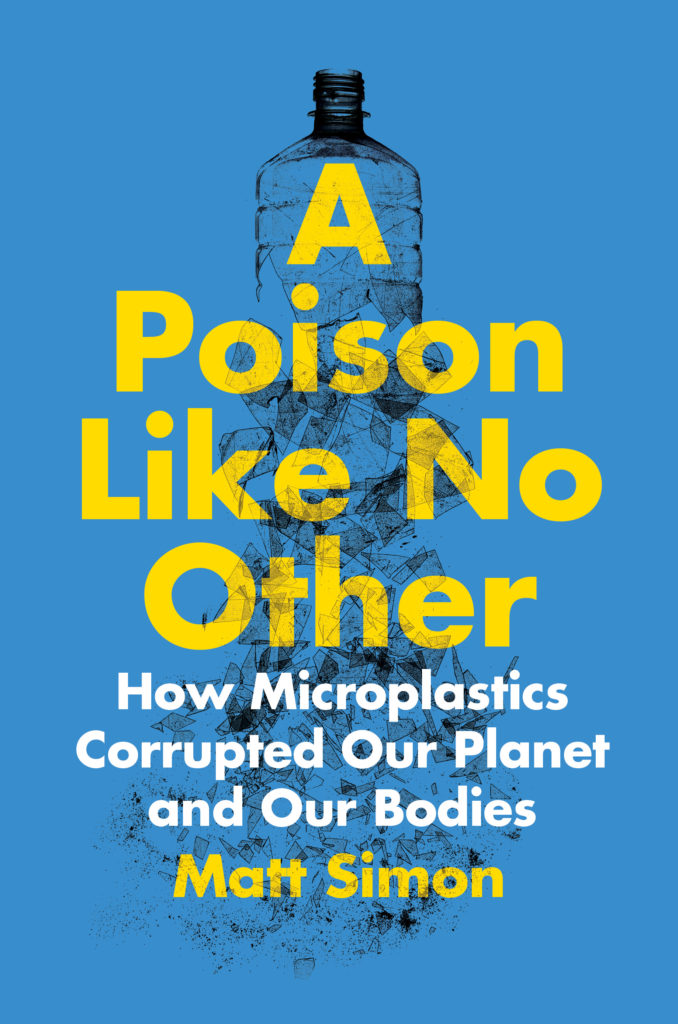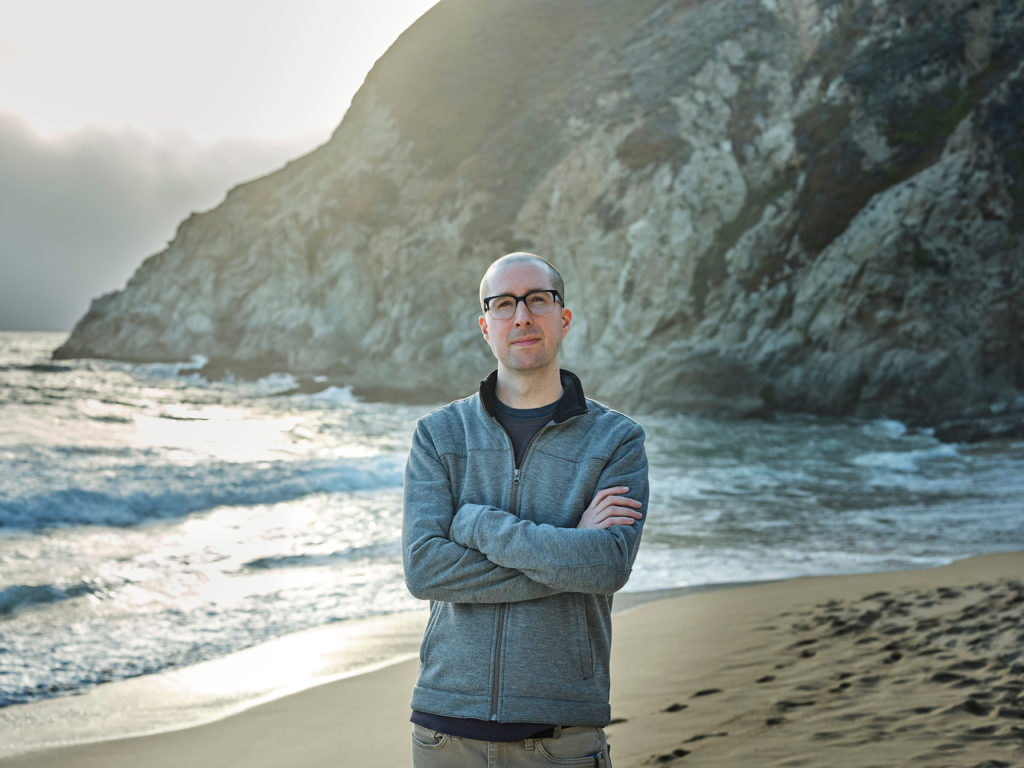These pesky plastic particles are absolutely everywhere.
They’re in our drinking water, our food, our rain, our clothing… even newborns and the most remote lake in Tibet. Microplastics are plastic fragments, fibers or film—less than 5 millimeters long—that have been shed from degrading macroplastics, like bottles and bags. These pesky little plastic particles are impossible to avoid and have invaded every human and animal body on this planet.
The problem doesn’t end there. Nearly all plastics are made from fossil fuels and this industry resulted in emissions amounting to 1.7 billion metric tonnes of CO2 in 2015, according to a new study in Nature Climate Change. With volumes of plastics produced doubling every decade, by 2050 CO2 emissions could reach 6.5 billion tonnes, or about 15 percent of the global carbon budget, equivalent to 615 five-hundred-megawatt coal plants. Another study revealed that plastic, when exposed to the elements, releases methane and ethylene – two powerful greenhouse gases that can further exacerbate climate change.
To learn more about microplastics and their microscopic offspring, nanoplastics, we spoke to Matt Simon, a science journalist at Wired magazine and the author of A Poison Like No Other: How Microplastics Corrupted Our Planet and Our Bodies. Listen to the podcast episode now, then read on for more details.
The most shocking fact about microplastics
Matt shared the most shocking fact that he discovered in researching the book:

“That the most microplastic-polluted place you frequent is where you are right now, in a home or office or some other indoor space. There’s an astonishing amount of microplastic in the atmosphere, to be sure, but there’s much higher concentrations in indoor air—one study found that you might shed a billion microfibers from your synthetic clothing each year, just by walking around. Tens of thousands of microplastics land on the floor of your living room each day, which is all the more concerning for infants who spend so much of their time crawling around down there.“
In reading Matt’s book, I found this fact to be just as shocking: “By the middle of this century humanity will have spent a hundred years producing a total of 75 trillion pounds of plastics and additives, equal to 100,000 Empire State Buildings.“
The other fact that grabbed my attention was that, “of prime concern among the thousands of ingredients in plastic are endocrine-disrupting chemicals, or EDCs, which make hormones go haywire, even in low concentrations. Most infamous among them is bisphenol A, better known as BPA, used extensively in plastic bottles but also linked to depression, sexual dysfunction, and several types of cancer.“
Matt shared more shocking impacts of microplastic pollution…
- Microplastics contain a cocktail of toxic chemicals, many of which are linked to diseases like diabetes and cancer.
- Microplastics break even further into nanoplastics, which are small enough to move through human organs—including the brain—and enter our cells.
- Nearly everything around you—carpets, curtains, coasters, cups, packaging, clothing, couches, beds –contains plastic and it all sheds plastic particles.
- Your home is one of the most polluted places—you could inhale as many as 7,000 microplastics a day.
- Eat up—nearly 700 million pounds of microplastics are spread on U.S. crop fields annually via fertilizer.
- Takeout coffee cups release tens of thousands of microplastics and millions of nanoplastics—along with toxins like lead, arsenic, and chromium—into hot water in just 15 minutes.
- Prepping infant formula in plastic bottles releases millions of microplastics into the liquid—babies could be drinking over 1 billion particles a year.
Q & A with Matt Simon

For a more detailed look at micro- and nanoplastics, here are some helpful questions and answers from Matt.
What is exactly is microplastic? How are the problems associated with it different from those with “regular” plastic?
A microplastic is defined a piece a plastic—be it a fragment, fiber, or film—less than 5 millimeters long. This is a distinct category from the macroplastics we’re all familiar with, like bottles and bags, which break into microplastics as they degrade in the environment. While these macroplastics kill larger animals like sea turtles, microplastics are small enough to infiltrate the body of every animal on Earth. Unlike a plastic bag, they can get into the bloodstream and accumulate in organs, releasing toxic chemicals all the while. And scientists have only recently been able to detect and study nanoplastics, which are small enough to enter human cells.
You write that microplastics are everywhere—from the air to the water to our food. How did they get there?
Because they’re so small and light (one of the many charms of plastic as a material), microplastics easily take to the air, blowing thousands of miles around the world. This means that even though there’s little human activity on the tops of the highest mountains or in the Arctic, microplastics still accumulate in those most remote of places.
Whenever you wash your synthetic clothing like stretchy underwear or yoga pants—two thirds of clothes are now made of plastic—tiny plastic microfibers wash out to a wastewater treatment plant. From here, the fibers are either flushed out to sea, where scientists are finding them even in the deepest parts of the ocean, or they accumulate in “sludge,” the human waste that’s used as fertilizer. So farmers are unwittingly slathering concentrated microplastic in their fields, which are scoured by winds, lofting still more particles into the atmosphere. (Not to mention the potential effects the particles might have on the crops themselves.) And as plastics production has increased exponentially over the last century, so too have the concentrations of microplastics in animals, ocean sediments, and the air.
What is your biggest concern about the effect of microplastic pollution on human health?
Scientists are most worried about the many toxic chemicals in plastic, most notably endocrine-disrupting chemicals, or EDCs. This is a broad category of chemicals that even in low doses can cause our hormones to go haywire, resulting in metabolic problems, including obesity, and have been linked to various kinds of cancer. So even though microplastics are tiny, health experts are worried that even in small concentrations in the body they could still be doing harm. But to be clear, scientists have only just begun to study the potential effects of microplastics on human health, so those harms aren’t yet proven.
What are the biggest threats to wildlife and marine life from microplastics?
A sea turtle is big enough to swallow a plastic bag and choke to death on it. But many, many more ocean creatures can swallow microplastics, leading to “food dilution”—basically, animals like small crustaceans and fish larvae are filling up their stomachs with plastic particles, decreasing their appetite for actual food. Fish larvae also get microfibers stuck in their gills, affecting their ability to breathe. And all of these animals are accumulating microplastics in their guts and tissues, where the particles release their component chemicals.
In rivers, storm runoff from roads introduces tire particles (technically a kind of microplastic, since it’s synthetic rubber) that lead to mass dieoffs of fish in Washington State. On land, animals like insects are also consuming microplastics—a caterpillar, for instance, eats both plants leaves and the plastic particles that have landed on them after flying through the atmosphere. Microplastics are now so ubiquitous in the environment that there’s no reason to believe every animal isn’t exposed to the particles in some way.
What are three things that consumers can do to reduce their exposure to microplastics?
Religiously vacuuming is a big one, but be careful to dispose of the plastic-laden dust so that you’re not just flinging it into the air again. Secondly, to reduce the amount of microplastic you’re sending into the environment, you can actually buy special aftermarket filters for your washing machine which catch the fibers before they flush to a wastewater treatment facility. But most important of all, we have to not only stop buying so many single- use plastics, but also demand that companies phase them out as a matter of environmental emergency.
On a systemic level, what are the solutions to plastic dependence and pollution?
At the end of the day, the only thing that can truly fix the plastic crisis is to majorly curtail the
production of plastic. That’s it—end of story. Plastics will continue to serve essential
purposes, like in medical equipment, but single-use plastics have to go. Plastics are made of
fossil fuels and as the world transitions to renewable energy, petro companies will double
down on plastics for revenue. So we’re fighting against very powerful, very rich interests who
want plastics production to continue to increase exponentially—the natural world and
human health be damned. Combined with climate change, the microplastics crisis is a threat
to life on Earth and time is running out to stem the flow of the particles into the environment.
Take GD Action Against Microplastics

Matt talks a lot about the need to start regulating plastic manufacturers and staunch the free-flow of plastic into our eco-systems. This is a crisis. Other countries not only produce less plastic than the U.S., but they’ve also more successfully legislated against plastic pollution.
Besides reducing plastic use in our own lives, as citizens of this earth we can participate in the fight against microplastics by signing petitions, donating to or volunteering for organizations that are focused on reducing plastics in our world. Here are a few examples:
Plastic Pollution Coalition collaborates with a huge alliance of organizations, businesses, and individuals around the world to create a more just, equitable, regenerative world free of plastic pollution and its toxic impacts. You learn more and sign petitions on their website at plasticpollutioncoalition.org.
Plastic Oceans International is a US-based 501 (c)(3) organization whose goal is to end plastic pollution and to foster sustainable communities worldwide. Learn more at plasticoceans.org.
The Surfrider Foundation is dedicated to the protection and enjoyment of the world’s oceans, waves and beaches for all people through a powerful activist network. Learn more about their mission at surfrider.org.
Do you have a favorite organization that has a similar mission? Please share it with us in the comments section!
Additional Podcast Episodes About Plastics
Eco-Style: Why Organic Clothes Matter: An interesting discussion with Starre Vartan, founder/publisher of Eco-Chick.com about why organic clothes matter and why we should all be paying closer attention to eco-fashion for our own health, the health of those that produce it, and of course, the health of the planet.
Eco-Style: Recycled plastic clothes? Maybe not for clothing: Most of us love any idea that keeps plastic bottles from going into landfills, and on the surface, up cycling or recycling plastic into polyester material seems like a great idea, until you think about the chemicals that may be leeching into your skin and other factors. Ugh. Something to consider with Alyssa Couture eco-fashion designer.
6 Super Simple Ways to Use Less Plastic: While change needs to happen on a grander scale, we can all find ways to reduce plastic in our own home. This episode provides some helpful tips.
Do you plan to do anything differently after listening to this episode? We’d love to hear your thoughts!